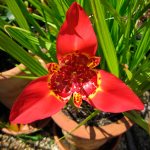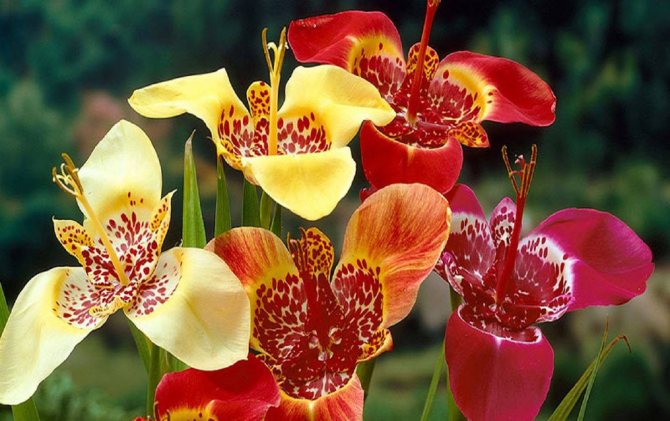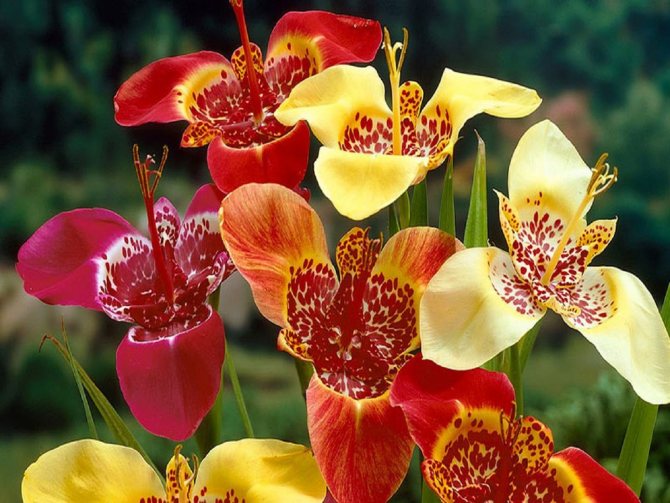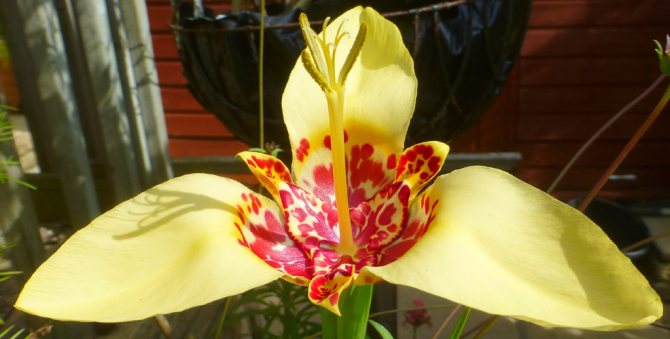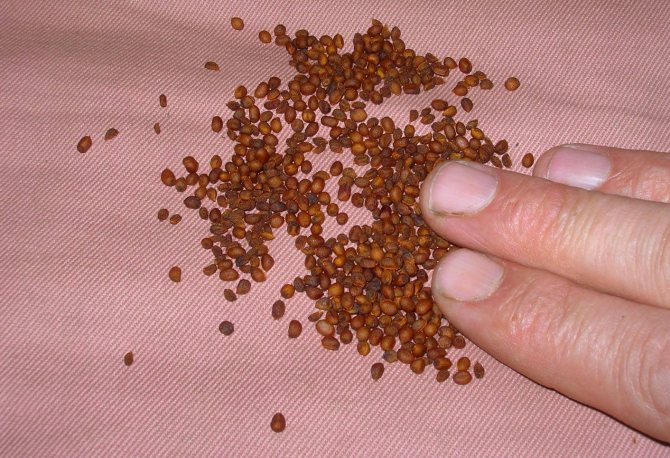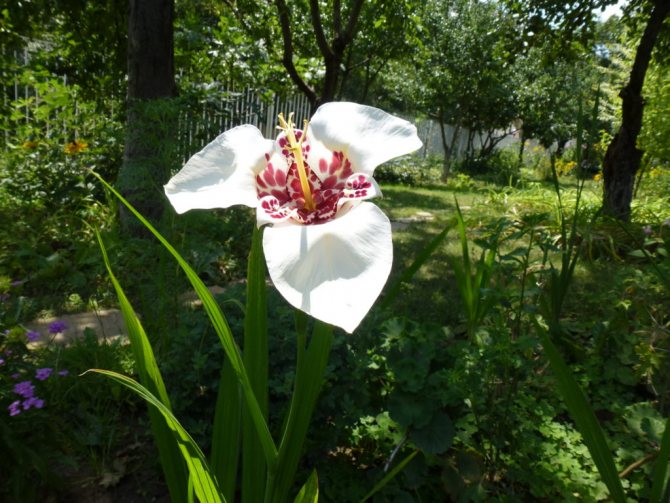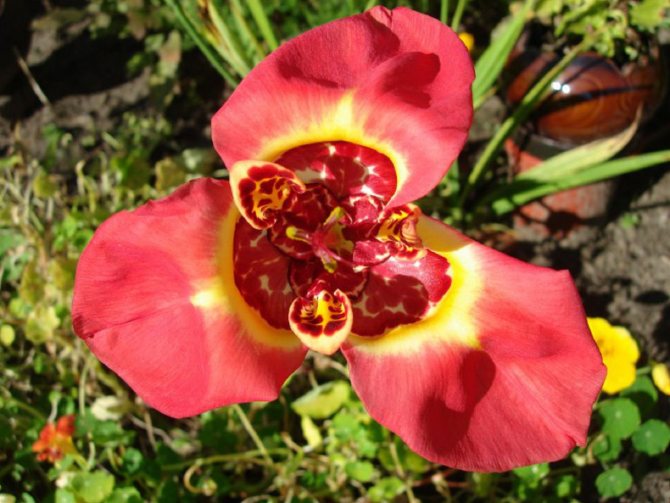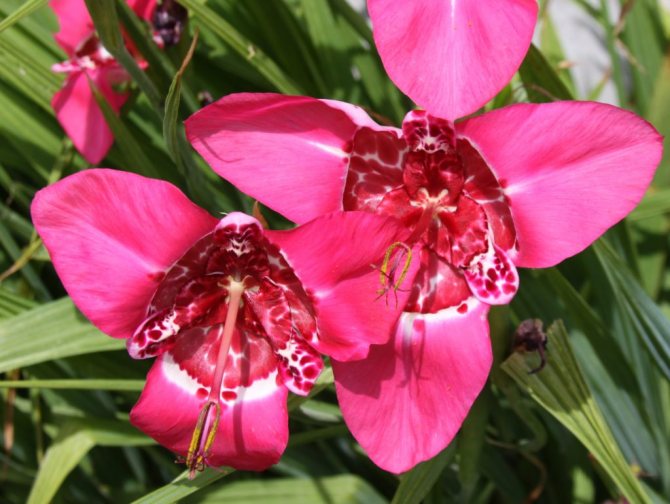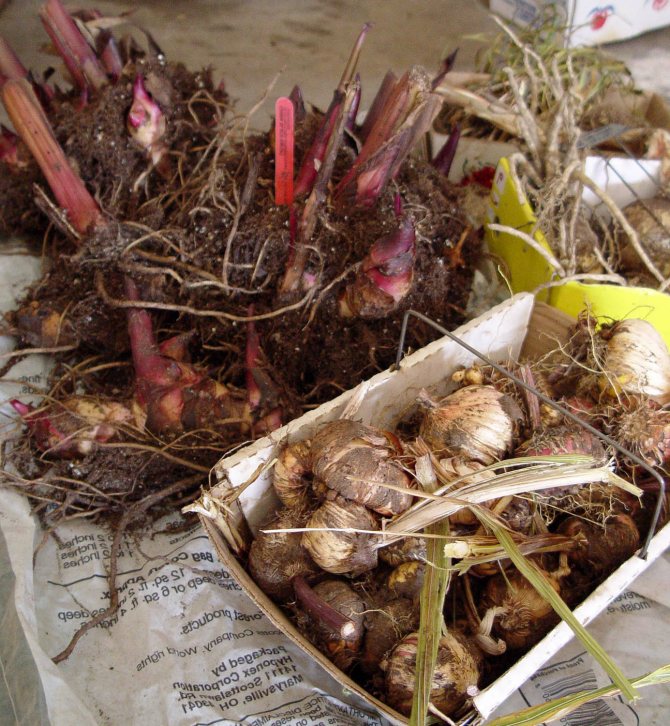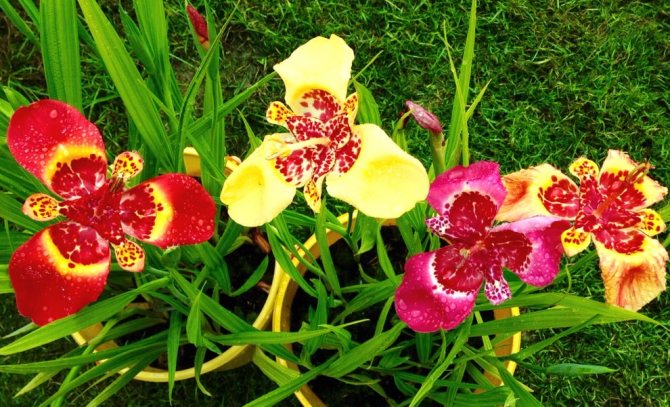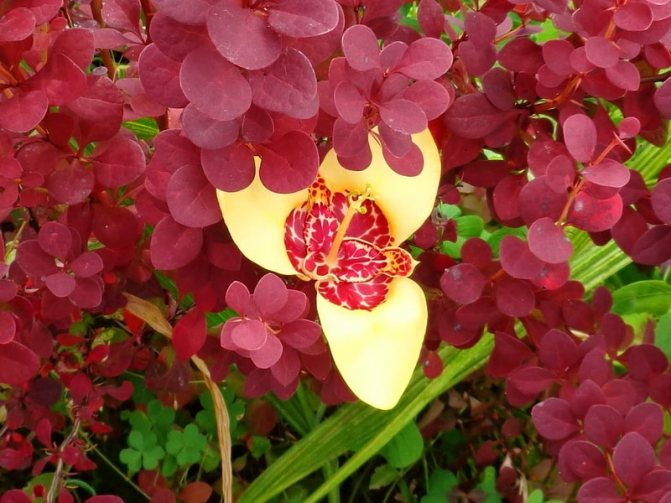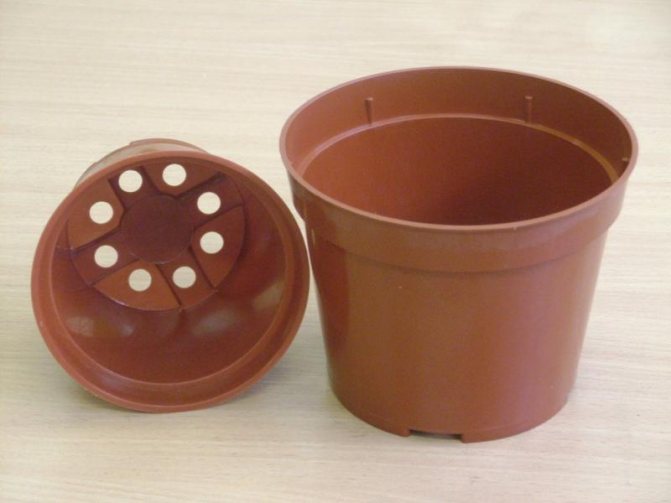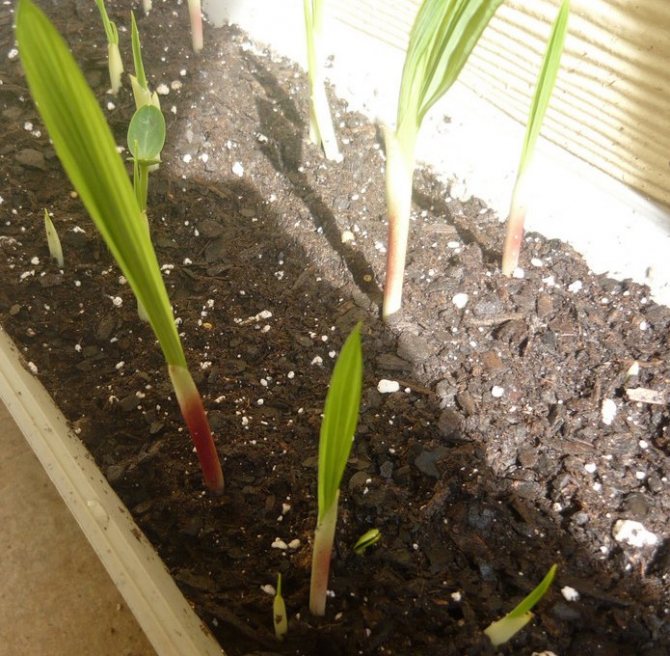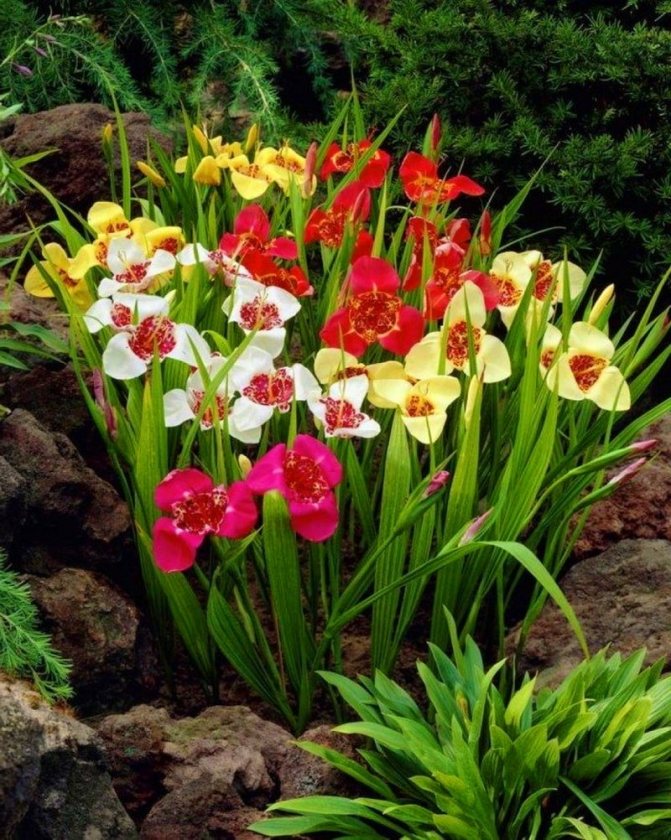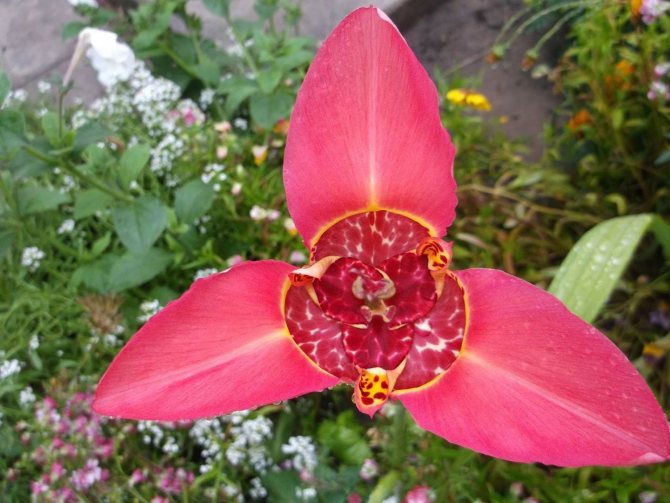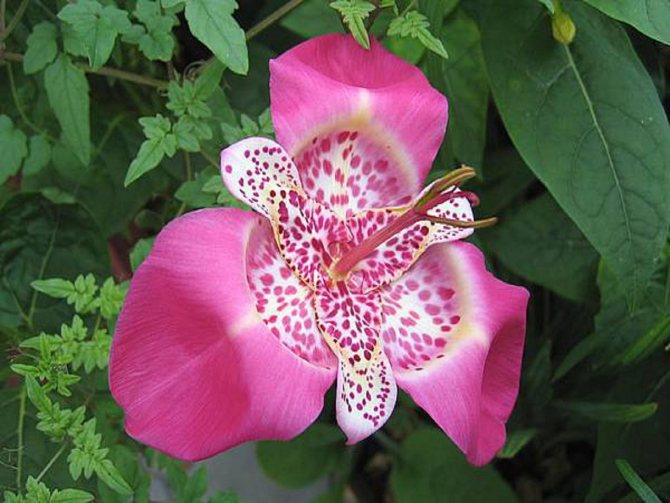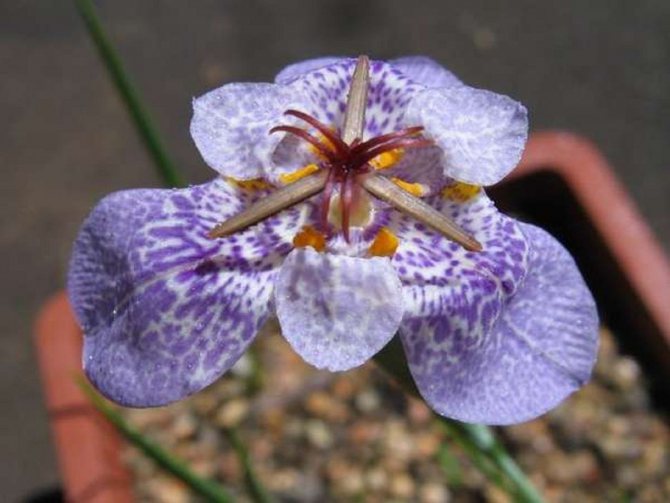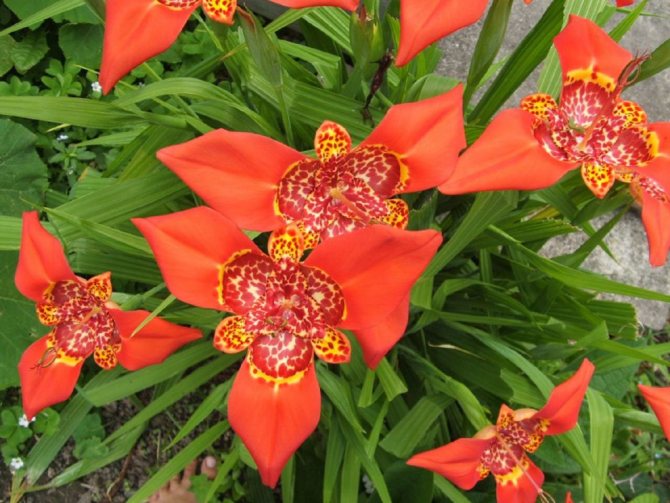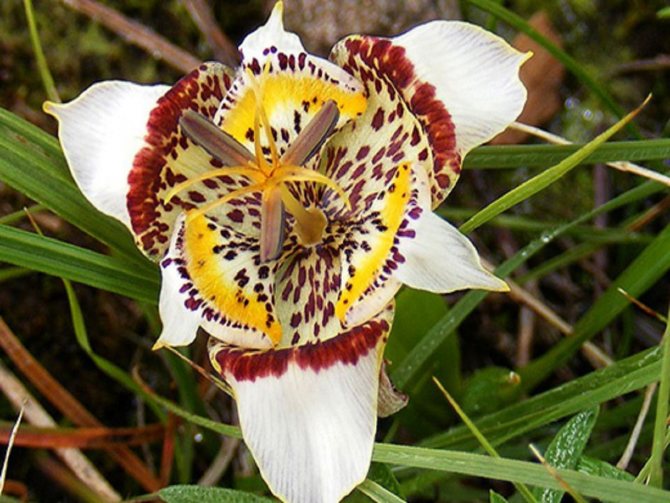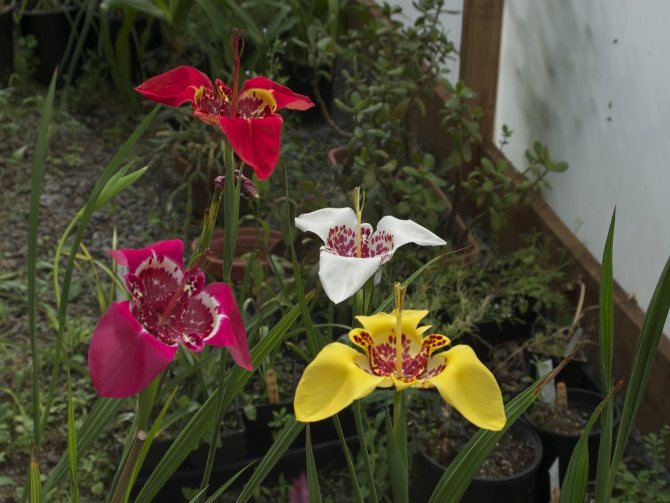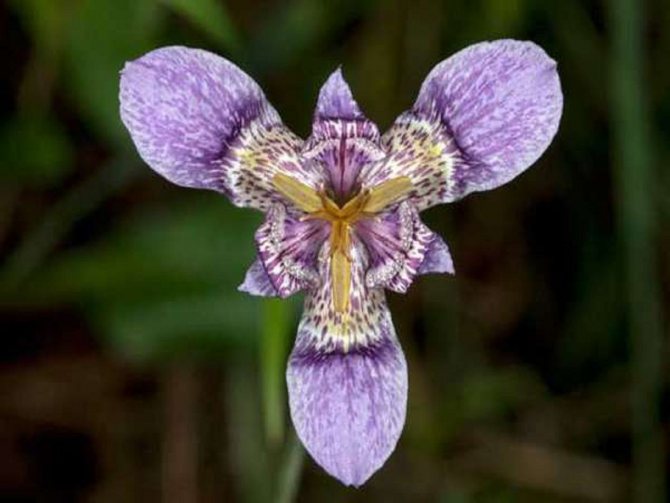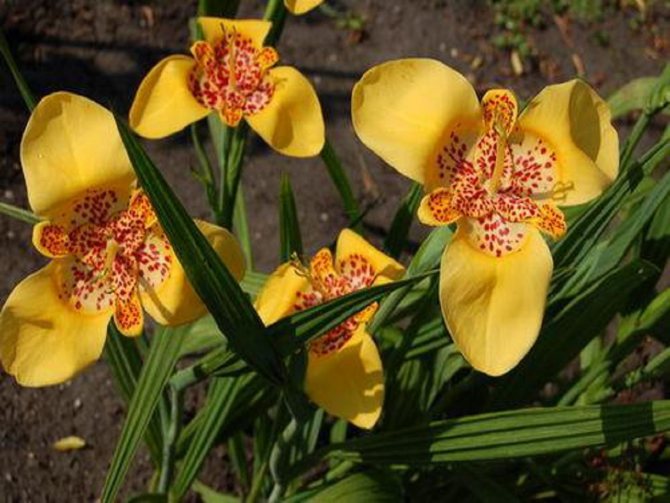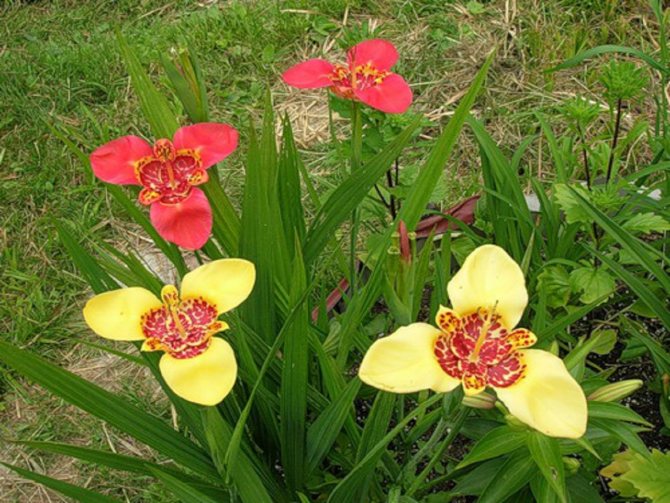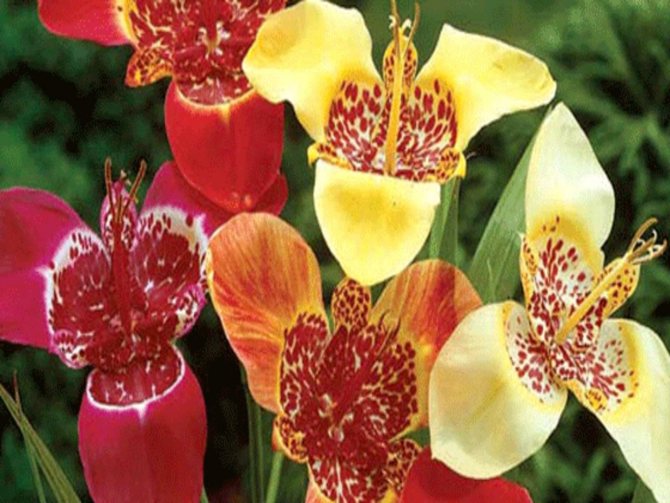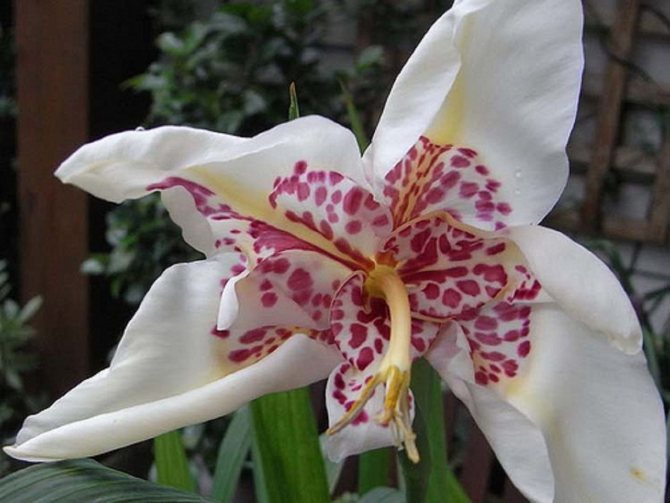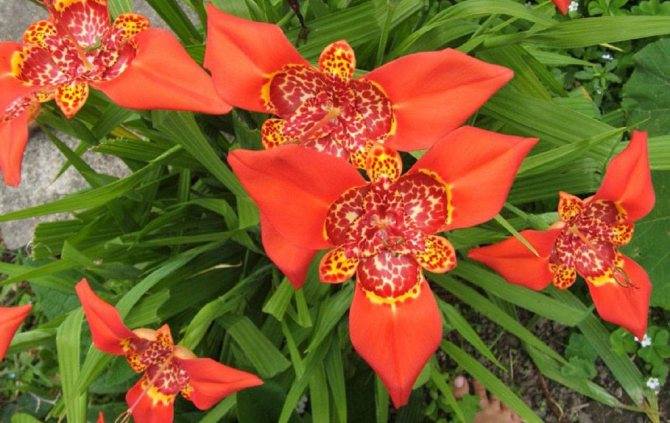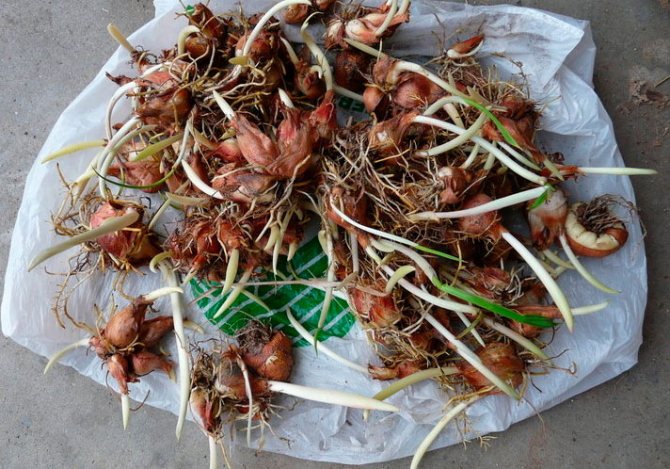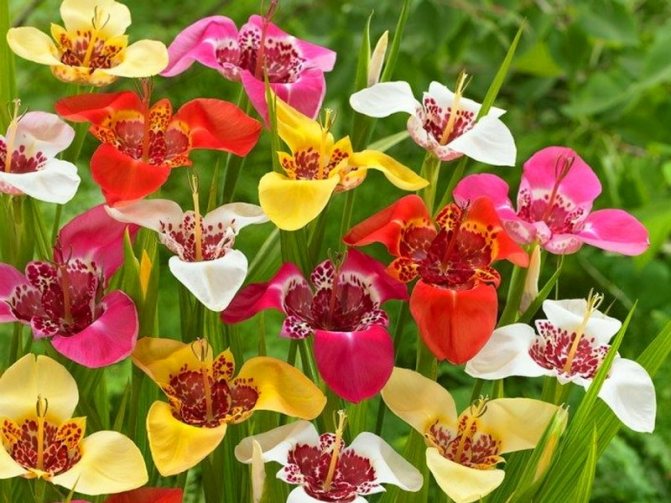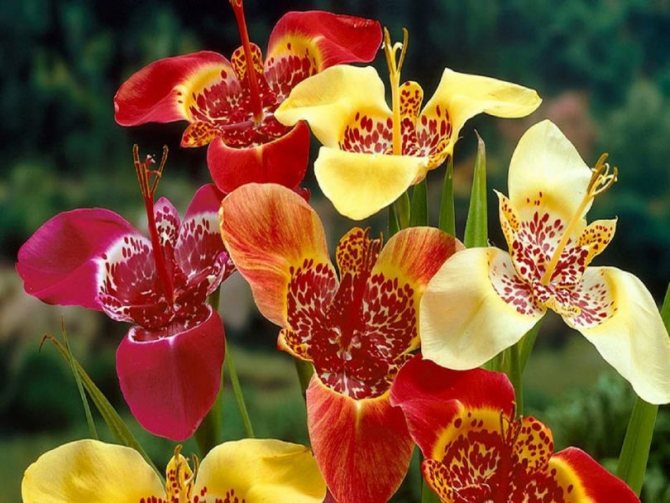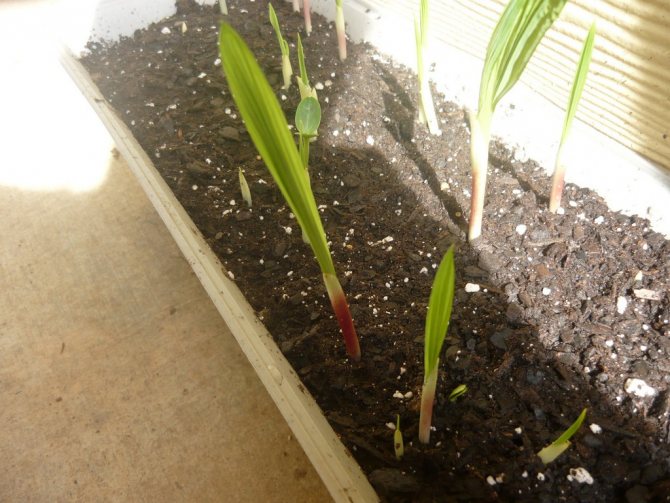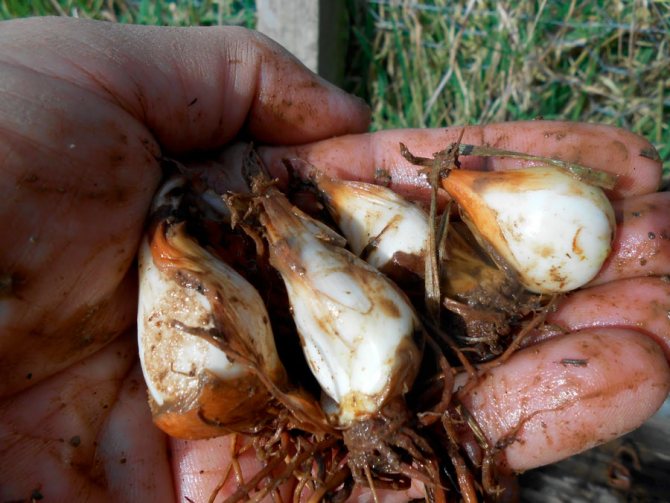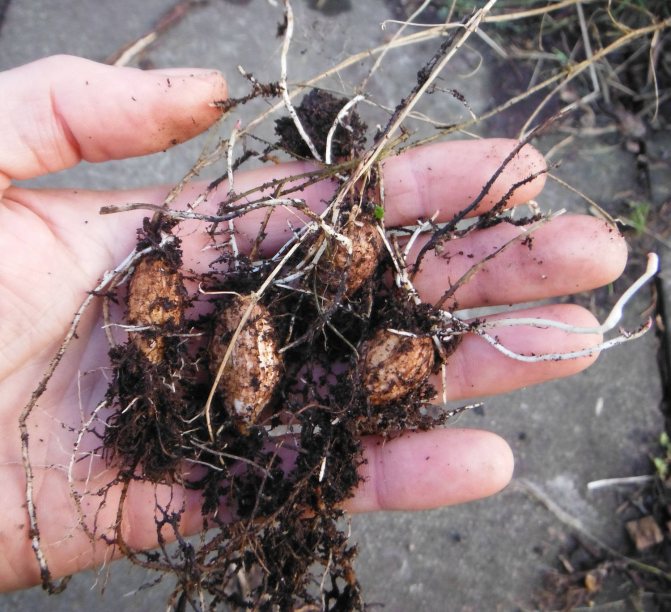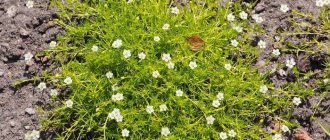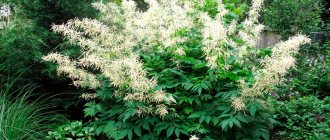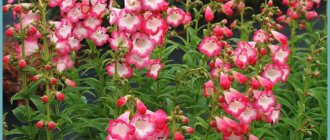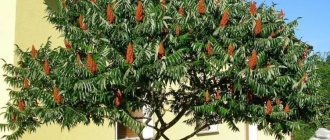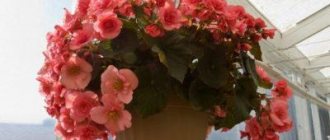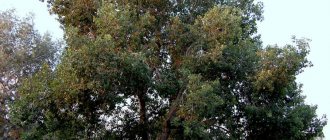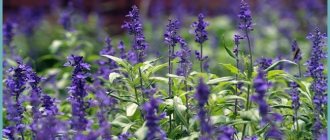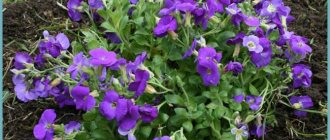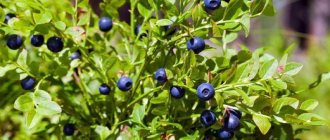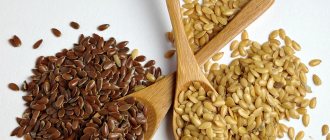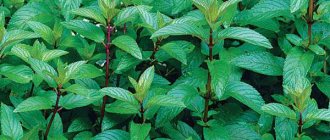Tigridia belongs to perennial bulbous flowers, and the plant got its name due to the unusual variegated color of the petals. Despite the fact that tigridia is considered very unpretentious, it is just beginning to be grown in the gardens of our country.
If you want to decorate your garden with these exotic flowers, be sure to check out this article. In it you will find useful information about planting and caring for plants, and descriptions of varieties with photos will help you choose a species suitable for growing.
- Seed planting
- Watering
Tigridia in winter
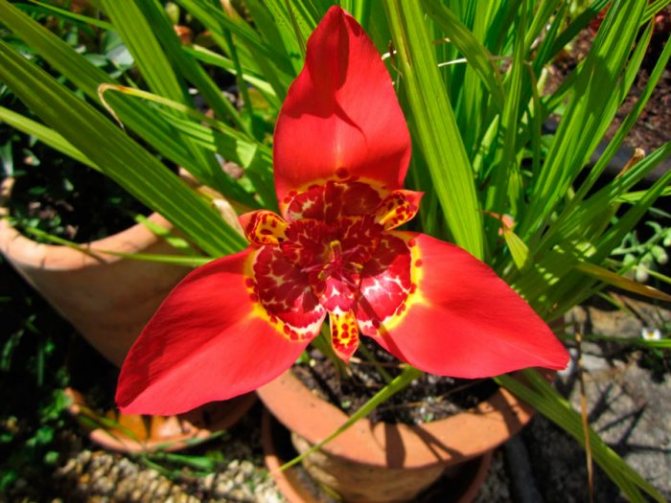
Storage preparation
Since tigridia is a thermophilic plant, it is possible to leave it for wintering in the open ground only in the warmest southern regions. Therefore, with the onset of autumn, most gardeners remove the corms from the soil and store them until spring, while choosing a cool enough place, but the temperature there should not drop below 0 degrees. However, digging up tigridia corms and storing them is not so simple. In order for the planting material to be well preserved until spring, it must be fully ripe, and for this you need to know exactly when to remove the bulbs from the soil in the fall. This procedure is carried out only after all the leaf plates on the bush wither. If there is a threat of frost, but the foliage is still green, it is recommended to dig the bushes together with a lump of earth, which must be large enough, then it is transferred to a cool and well-lit room. Only after the leaf plates turn yellow and wither, it will be possible to start harvesting the planting material for storage. Preparation of corms for storage includes their cleaning, rinsing, as well as etching in a solution of the Maxim preparation and thorough drying. Separation of children from parental bulbs should be done in the spring before planting, but not in the fall.
Storage rules
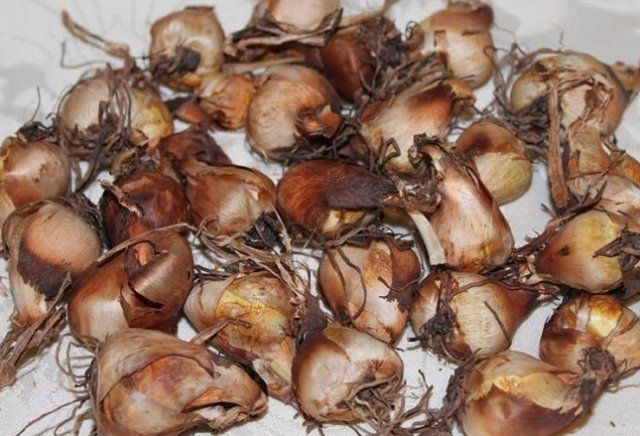

Corms should be placed in a container filled with dry sand or peat. They are stored for storage in a cool (3-10 degrees) room with normal air humidity. Also, the bulbs, if desired, can be folded into paper bags, which are removed on the refrigerator shelf intended for vegetables, where they will be stored until spring. During the winter, do not forget about the bulbs; a systematic check should be carried out, during which it is necessary to discard all damaged and rotten bulbs.
Winter storage
At the end of the growing season, several babies develop in the root zone of the flower near the uterine bulb. They can sprout next spring. This is the so-called bulb nest, which is the planting material.
They dig it out at the end of September, before the first cold snaps appear, together with the dried aerial part of the flower. After that, the corms are kept for 2 weeks at room temperature in a well-ventilated place to remove excess moisture.
After 14 days, the dried parts of the roots and leaves are cut off without disturbing the structure of the corms and leaving hemp about 3 cm long. Further, tigridia should be treated with any potent plant fungicide.
Important! If there is high humidity in the storage room, the bulbs should be provided with special conditions that provide for good ventilation. To do this, instead of sand, they are placed in a nylon mesh and suspended.
The simplest option would be a 0.7% foundation emulsion. After that, the corms are dried again at room temperature for 1-2 weeks.
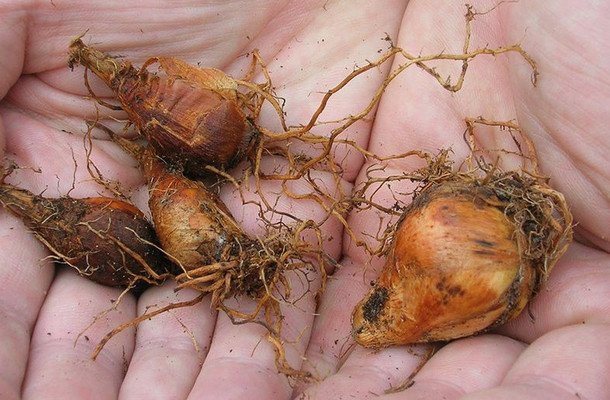

Prepared bulbs are placed in a container and covered with dry clean sand. In this form, the bulbs are stored in a cool place at a temperature of about 5 ° C. A few days before planting, the nests are removed and divided into separate bulbs. Planting material with obvious signs of damage or rot is discarded.
In our gardens, tigridia of the following species is most often found, photo
Periwinkle planting and care in the open field photo
Auer - A distinctive feature of the species are yellow petals, the inner part of which turns into a bright and motley color. The buds reach sizes up to 15 cm.
Canaryensis - Flower with pastel shades of petals, the middle is bright red.
Alba - This species is characterized by white petals, the heart of the flower is variegated and bright. The size of the bud reaches 10-15 cm.
Lilacea - is distinguished by an exceptionally pink color of the petals, but with a traditionally variegated center and a bud size of about 15 cm.
The combination of these species in one composition will give a unique colorful look to any flower bed or garden. For calmer, pastel colors of the garden, you can use one at a time, or by planting them in different parts of the site. In European countries, tigridia is as widespread as gladiolus in our latitudes.
Features of planting and care in the open field
The homeland of plants is Mexico, Ecuador and Peru (countries with a warm climate), where tigridia is a wild-growing flower. Accordingly, in our latitudes, for comfortable growth and flowering, it needs to create favorable conditions - more heat and light.
Tigridia is planted in a soil well-warmed by the sun no earlier than May. Flower bulbs are placed in pits, up to 8 cm deep. In this case, between the plants you need to make indents of up to 10 cm. There is a possibility of planting the plant in the ground in an earlier period - mid-April. To do this, it is pre-planted in pots and occasionally watered. When transplanted into the ground, they are taken out carefully, together with the ground surrounding the bulb.
The plant blooms for only one day, expect the next inflorescence in about 5 days. To create the impression of constant flowering, you need to place them in groups. Flowering time July - August. After the end of flowering and before the onset of cold weather, the bulbs must be dug up and placed in a cool place (with a temperature of about +7 degrees). It is recommended to sprinkle them with sand a little during storage. With high humidity in the room, it is better to store tubers in a net, suspended.
Features of care.
The main thing in caring for tigridia is correct and timely watering. The plant especially needs watering in hot weather.
It is important to moisten the mail deeply so that the water soaks the bulbs well. Surface watering only harms the flower. The soil for the plant needs sandy or with a neutral reaction
During flowering, wilted heads are cut off so that they do not take away the growth energy from the plant itself. You can fertilize tigridia with peat, compost or ash. The easiest way is with fast-dissolving complex fertilizers. They are introduced into the soil in combination with regular watering. Repeat this fertilizing for the plant two to three times a month.
Some secrets of caring for tigridia:
1. Experienced gardeners recommend planting tigridia in quiet corners of the garden, where there are no drafts.
2. The flower has a thin stem. To increase the resistance of plants, you can tie them up with stakes.
3. Remove the bulb from the soil for winter storage only after the top of the plant has completely wilted.
Tigridia flowers, thanks to a wide variety of bright colors of buds, are able to decorate even the most ordinary piece of land, turning it into an exotic oasis. The plant is unpretentious in care and even a beginner can cope with the cultivation of these plants in their own garden.
Description.
Tigridia is a genus of bulbous plants that is included in the Iris family. The genus is not numerous, there are about 50 different species. Tigridia of hybrid varieties, which have larger inflorescences and a long flowering period, are cultivated. But, in natural varieties, each blossoming flower does not live longer than a day.
The root system of tigridia is an onion, with cord-like processes extending down to 50 cm deep. The leaves of the plant form a basal rosette, and are located on the stem alternately. The leaves often grow taller than the flower stalks, making the flower even more beautiful. Leaves are narrow, linear, deep green.
Stems are cylindrical, erect, flexible. The ornamental value of the plant lies in its beautiful, large flowers. The colors can be different. Tigridia are white, pink, yellow, lilac, crimson, red. The height of the plant is no more than 60 cm, and the lowest can grow up to a maximum of 15 cm.
Plant care
Flower poultry farm Planting and care in the open field and at home Photo and description
Despite the exoticism, tigridia is distinguished by its undemanding care. She needs to ensure regular watering, timely fertilization and preparation for winter.
The plant needs abundant watering, especially on hot summer days. At extreme temperatures, it is recommended to spray the stems and leaves. The water should be warm and settled. After the plant pleases with its magical flowers, they begin to prepare it for winter. For this, the number of waterings is gradually reduced.
With the appearance of the first leaves, it is necessary to apply fertilizer. For active growth, it is recommended to give preference to mineral and organic fertilizers. The next time the tigridia will need fertilization when the buds appear. Top dressing during this period will ensure a beautiful flowering.
Experienced growers periodically mulch and loosen the soil to retain moisture. Do this after watering or rain. Peat or deciduous humus is used for mulching.
After the flowers are completely withered, the shoots are cut off. Before the first frost, the bulbs should be in the soil and accumulate nutrients that will make it easier to endure wintering. Since tigridia is very sensitive to cold weather, the bulbs are dug up and cleaned of soil for the winter. After drying, they are placed in containers with peat or sand, which are stored on a loggia or in another cool room. The main thing is that the ambient temperature does not rise above 10 degrees Celsius, but also does not fall below zero. The soil is periodically sprayed with warm water.
Diseases and pests
Planting weigela and caring for it in the open field
The most dangerous period for a plant is winter. At this time, when the bulbs are stored in wet sand or peat, there is a high risk of rot. To avoid this, the bulbs are treated with fungicide solutions.
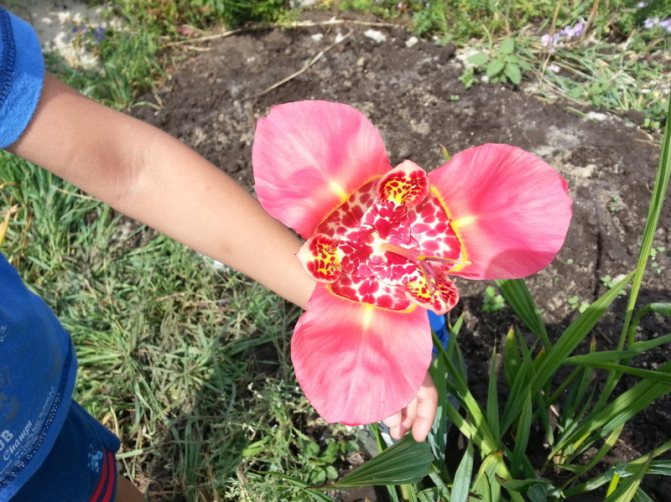

Bears can completely destroy the root system of a plant, as they feed on bulbs. If small piles of soil appear on the surface of the soil, special chemicals must be used.
Dry yellow spots on the leaves of the plant signal the appearance of thrips. They feed on plant sap, drawing out all the nutrients from them. To combat this scourge, insecticides or infusion of celandine are used.
Growing an exotic flower on the site is interesting and exciting. Planting a tigridium flower and caring for it does not require special knowledge, therefore, beginners can also do it. Its unusual and bright flowers will bring a little exoticism to any flower garden, and easy care will bring joy to any florist.
Landing
When choosing a landing site, you don't have to worry about the illumination, it is suitable for both a sunny area and partial shade. It should be borne in mind that tigridia can have a height of 30 to 70 cm, so the distance from the viewing site plays a role.
Planting tigridia and care in the open field is carried out taking into account how and where the plant will winter. Tubers can be dug up annually, but can only be covered with foliage or other covering material. Take care of the dryness of the planting sites, the corms will not tolerate excessive waterlogging. Fusarium is a frequent disease of tigridia, and only the absence of excess moisture can save a beauty from the disease.
When planting bulbs, keep in mind that one flower blooms for only one day and will not bring special beauty and sophistication to a flower bed. Only group plantings, in large clumps, when the flowering of one bulb is replaced by the flowering of another, will bring true aesthetic pleasure.
After removing the bulbs from the refrigerator, carefully inspect. If there are visible lesions with rot or fungus, clean the places and treat them in the “Maxim” preparation. If the corms are not large, it is not worth deepening them by more than three heights, and keep the distance between them within 12 - 15 cm.
Having dug a trench, lay sand on the bottom, this will prevent the bottom from rotting, and then a layer of nutrient soil. Corms are laid out on top and sprinkled with nutritious soil.
Tigridia in landscape design
Tigridia can be a great garden decoration if you know how to place them correctly (Figure 6). First of all, it should be borne in mind that the duration of flowering of one bud is only a few hours, so this culture will look impressive only in group plantings.


Figure 6. Tigridia in landscape design
In addition, experienced florists recommend planting several varieties of plants at the same time so that the flowerbed turns out to be bright and original.
When planning a flower bed, it is important to take into account that it is undesirable to plant other bright flowers next to the tigridium, which will shade the beauty of the plant. The best neighbors are conifers, arabis or phlox.
The video shows how to plant tigridia and other bulbs at home.
Cultivation of culture
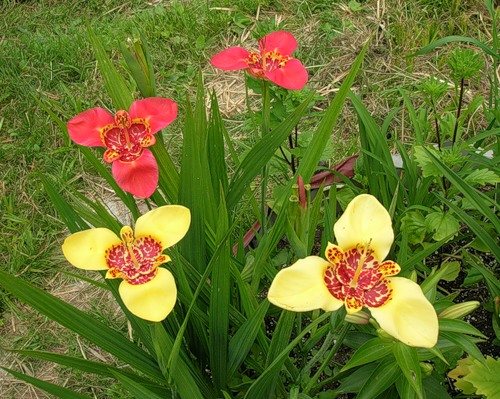

Tigridia corms can be purchased in the spring. They were dug up in the fall and kept in peat bags throughout the winter at an air temperature of about 4 - 6 ᵒ С. Having freed themselves from hibernation, they are in no hurry to wake up, for this they have to go through rather complex biochemical processes. There is no point in rushing them, but the process should be delayed. If it is still cold outside, and even more so there is snow, immediately send the bulbs to the lower shelf of the refrigerator, and there they will wait until they are planted in the ground.
If the bulb has already woken up, there is no point in refrigerating it, it will lose its vitality. Plant it in a pot with nutritious soil and put it on the windowsill, with the arrival of spring it will be possible to carry out transshipment and plant it in open ground.
Care
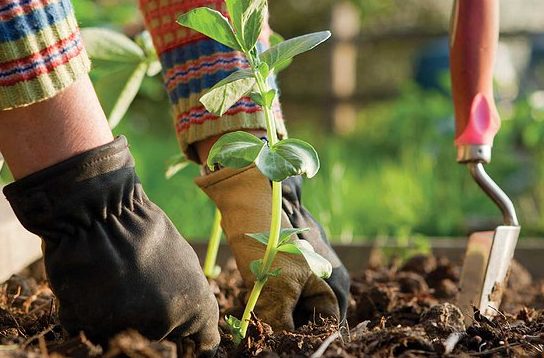

Growing tigridia in the open field is compared by many growers to growing gladioli. Indeed, in high varieties, under gusts of wind, a leaf and a peduncle also lie. When planting corms, it is necessary to take into account the lodging and provide the plant with supports and garters.You can land at small fences, then it will look original and beautiful.
Caring for the planting of tigridia consists in:
- weeding;
- watering;
- dressing.
Tigridia does not like waterlogging, but excessive dryness of the soil will not contribute to lush flowering and the growth of baby tubers. In the absence of rainfall for a long time, it is necessary to provide the plant with regular watering until the foliage begins to turn yellow.
If during planting the tigridia is “covered” with nutritious soil, then additional feeding is not required. In the case of depleted soils, it must be fed. Having diluted 20 g of ammonium nitrate in irrigation water, you can use it for feeding.
Tigridia responds well to the addition of furnace ash. The best time to apply this fertilizer is in autumn or early winter. In the spring, melting snow will tighten the elements of phosphorus and potassium to the required depth and provide the corm with minerals. If the digging of tubers is practiced, then when planting, ash can be brought into the holes, as if dusting it. Growing tigridia flowers, planting and care will not take up a lot of space and time, however, where the frosts are strong enough, you cannot do without digging out the bulbs.
Preparation for wintering
Tigridia blooms almost until frost. In the northern regions, the plant has to be dug up even when the foliage has not yet begun to turn yellow. The plant is taken into a dry room, placed on racks and kept together with the foliage until it is completely dry. After that, the stems and leaves are cut off, the old mother bulb is separated, and the young corms, without being cleared of covering scales, are merged into boxes or boxes.
Wintering
The best storage place is a basement or cellar. If there are not many bulbs, they can be placed in the refrigerator. Sprinkle the tubers with sand or sawdust. The best material will be oven ash, it will protect the bulbs from mold and mildew and create optimal humidity for successful wintering.
If ash is not available and other material is used, the bulbs are revised several times during the wintering period. It is necessary to select sick and rotten ones, and also to control the turgor (density) of the bulb. If they become soft, then it is necessary to raise the humidity, otherwise they will simply dry out until spring. In this case, the corms are sprinkled with slightly wet sand and after a while the condition is again monitored.
Drying out of tigridia bulbs during winter storage is a frequent occurrence and special attention should be paid to this.
Spring germination
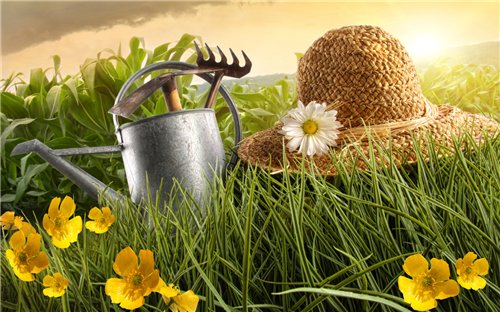

Some flower growers, trying to achieve that the tigridia will please with its flowering earlier, practice the germination of tubers. To do this, in March-April, they plant the nodules in cups and put them on a light windowsill for germination.
When the threat of frost has passed, by the transshipment method, corms with an earthen clod are planted in open ground. Tigridia is not a difficult culture in agricultural technology and its popularity will increase from year to year.
How to properly reproduce tigridia?
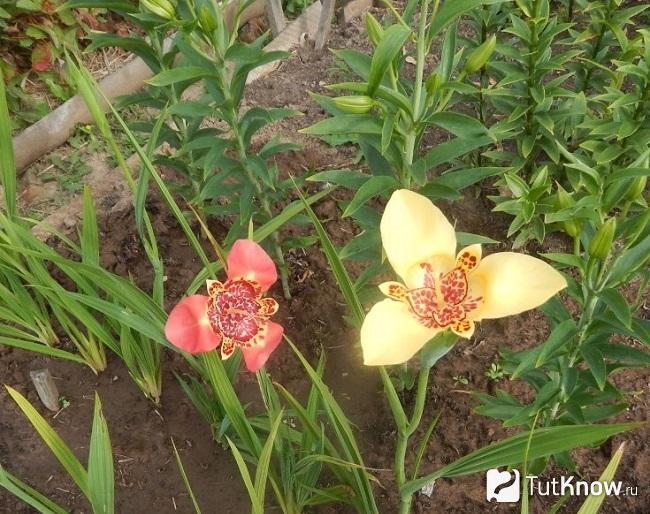

In order to have such a flowering plant in your garden, it is recommended to use the seed method or plant corms.
Reproduction of tigridia using seeds.
With flowering, which falls in the bushes from mid-to-late July, it becomes possible for the fruit-boxes filled with seeds to ripen. It is recommended to collect them before the time when the first frosts hit. All excess fruits that appear must be removed so that they do not weaken the bush. Sowing is recommended at the end of February and, which is typical, it is not required to carry out pre-sowing preparation of the seed. Tigridia seeds are distributed in a seedling box on the surface of a nutrient substrate (peat-sand mixture is often used).You can sprinkle it on top with a thin layer of the same soil or river sand.
The room in which the seedlings will be kept should be with a good level of lighting and a temperature within 20-25 degrees. The seedling box with tigridia crops can be covered with plastic transparent wrap or a piece of glass can be placed on top. Self-care will include daily airing (to remove accumulated condensation) and spraying the soil when it dries out from a spray bottle with warm water. When tigridia seedlings appear, it is necessary to remove the shelter, and when they grow a little and get stronger, dive into separate pots. They do this no earlier than when the plant acquires a pair of full-fledged leaf plates.
Care must be taken when diving tigridia seedlings because of their very fragile and delicate roots. Therefore, it is recommended to take them with a lump of soil surrounding the bulb, that is, to use the transshipment method. This method makes it possible to enjoy flowering after six months or a little more.
Reproduction of tigridia by bulbs.
Every year, each of the bulbs is replaced by a certain number of small children (often 5 or more), and then dies. These young bulbs form a nest. Before planting, young bulbs are separated from the mother specimen. All places of faults must be sprinkled with generously crushed charcoal. If this is not found, you can use pharmacy activated carbon. After that, an immediate planting of the "young" is carried out. Young tigridia bulbs are planted in the last week of spring or in early May. The bulbs are planted to a depth of about 10-12 cm. The distance between the holes is maintained at 15-18 cm.
To carry out the cultivation of corms, they are planted in early spring in pots or greenhouse conditions. In one container filled with a peat-sand mixture or garden soil, 3-4 tigridia bulbs are placed. The diameter of the pot should be no more than 12 cm, and holes are made in its bottom to drain excess moisture. The planting of the bulbs is carried out to a depth of 3 cm, and this distance should be from the crown of the corm. It is recommended to lay a layer of river sand under the bottom. Its thickness is maintained at 1.5–2 cm.
Care for such plantings of tigridia in the first weeks should be moderate soil moisture. If it became noticeable that the corms started to grow, then it is recommended to increase watering.
Important!
With such irrigation, moisture should saturate the soil at a depth at which the roots of tigridia bulbs are located.
Some gardeners place a deep tray under the pot so that it is possible to perform bottom watering, then the plant will take in as much moisture as it needs, and there will be no threat of waterlogging of the soil. In addition, a substrate that does not undergo acidification will exclude the development of fungal diseases. When arrows develop from the bulbs, the pots with tigridia plantings are moved to a warm, well-lit place (for example, on a windowsill). It is important to provide protection against drafts. Until the end of spring, the plants will grow up, they can be planted in prepared holes in the open field.
- See also ways of breeding sparaxis
Growing features
The plant is probably not very popular due to its short flowering period. If you want to see unusual flowers with your own eyes, you need to create the most comfortable conditions for them. Tigridia actively grows and blooms on light soils, which are not very acidic. It thrives on sandy or loamy soils if pre-enriched with peat, compost and fertilizers.
You can see big beautiful buds if you provide the tigrid with enough sunlight. The plant is native to the southern latitudes of North America, which explains its love of the sun.Because of the thin and fragile stems, they choose a place for planting that is protected from gusts of wind and drafts.
Experienced growers recommend planting crops in groups: then the flowers will bloom in turn, and this will create the appearance of continuous flowering. For outdoor cultivation, you can use:
- seeds;
- bulbs.
For growing with seeds, work begins in February - March, sowing them into a container and gently pressing into the ground by 2-3 mm. Small individual seedling pots with a mixture of turf, sand and peat can be used as containers. The first shoots should appear in about three weeks.
It is much easier to grow a flower using its bulbs. Planting in open ground is carried out only after the onset of heat. The most favorable time for this is early June. Small bulbs are placed in the ground to a depth of 5 centimeters. For larger tubers, the depth should be at least 10 centimeters. In order for the flowers to develop well, the distance between them should not be less than 15 centimeters.
You can also arrange for the sprouting of the bulbs in advance. To do this, at the beginning of April, they are planted in boxes with loose soil and are actively moistened, especially during the first week. Sprouted bulbs are planted outdoors in late spring. This method allows you to significantly speed up the appearance of colors.
Curious notes about tigridia
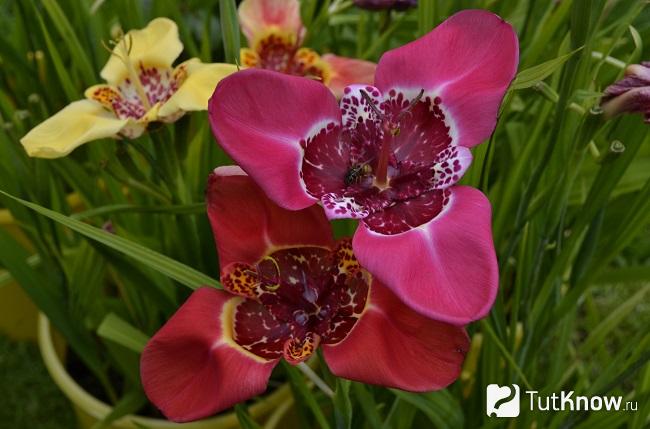

In ancient times, for the Aztecs, this flowering plant played not only a decorative role, but rather they grew tigridia because of its medicinal properties. So the roots of the flower were the material for the preparation of potions, which were used to treat stomach diseases or as an anti-febrile remedy.
It is interesting that most of the travelers who were lucky enough to see the blooming thickets of Tigridia for the first time adopted their simple tulips, which took on unusual shapes.
Types and varieties of tigridia
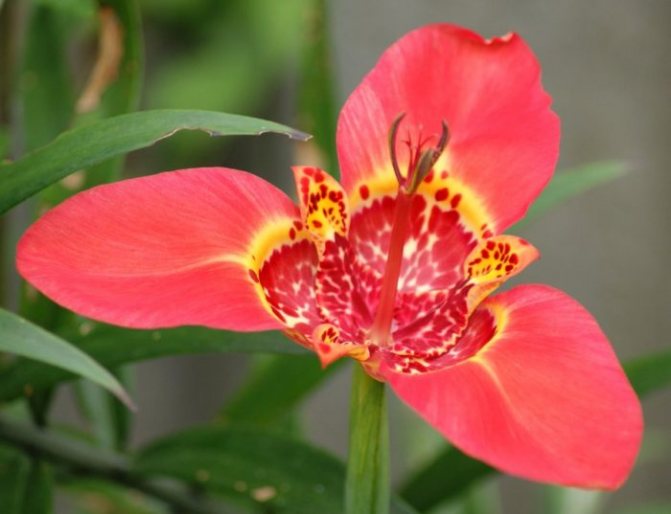

Peacock tigridia
Gardeners cultivate only 1 species of this culture - peacock tigridia (Tigridia pavonia). This species is native to Mexico and Guatemala. The height of the bush can vary from 0.25 to 0.7 m. On the surface of the corms, which have an irregular shape, there are membranous scales. The bulbs are 60 mm long and about 40 mm in diameter. At the end of the growing season, there is a complete depletion of the old corms, but children grow up in it, which form nests. In the parent corm, the number of children and scales on the surface is almost the same. From one bulb, 3-5 peduncles will grow, and about 5 flowers are formed on each of them. Greenish wide leaf plates folded along the length have a xiphoid shape. The flowers, reaching 10-15 centimeters across, consist of 6 lobes that open alternately. In the perianth, the outer lobes are colored orange-violet or deep red, and the inner ones are not as large as the outer ones, they have an orange-yellow spotted color, like the pharynx. Tigridia blooms in July – August, with the life span of each flower being 8–10 hours. In general, the duration of flowering is about 2–3.5 weeks. Garden forms:
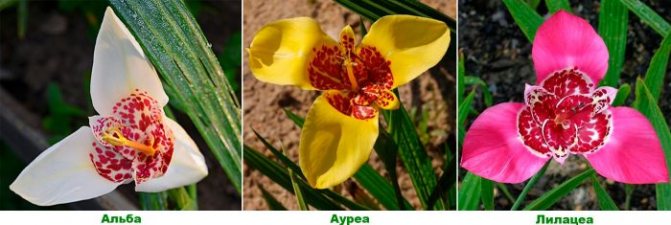

- Alba. The flowers are white, and there are red spots on their surface.
- Aurea. There are carmine spots on the surface of the dark yellow flowers.
- Carminea. The flowers are orange, covered with yellow spots.
- Lilacea. Carmine specks are located on red-purple flowers.
- Rosalind. The color of the flowers is pale pink.
- Canaryensis. The yellowish flowers have a rich red center.
- Speciosa. The color of the flowers is scarlet-red, and they have yellow-golden spots on them.
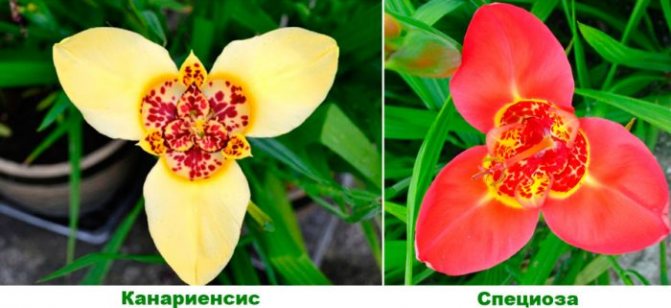

The variety mixture "Tigridia Ferraria mixed" is quite popular: the height of the bush is about 0.6 m, the leaf plates have a xiphoid shape, the flowers reach 15 centimeters in diameter, their outer petals are monochromatic (lilac-pink, white, red, orange or yellow) , there are spectacular specks on the three inner petals. Specialists engaged in breeding use in their work Mexican tigridia with yellow flowers, tubular tigridia with pinkish flowers and tigridia selerianu - lilac-blue flowers.And they also use other types that are not independently grown by gardeners.

